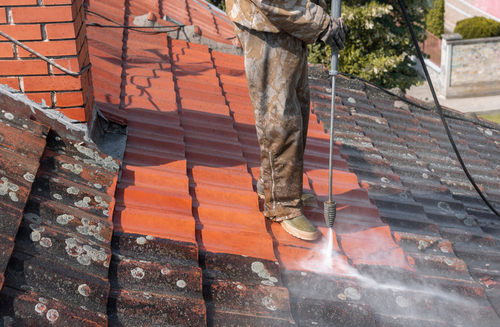
Do’s and Don’ts: The Pros and Cons of Different Methods for Cleaning Roofs
26th January 2023
Has the glossy, vibrant sheen of your roof shingles begun to fade? Then it’s likely green algae have moved in. If you can see thick patches of green, then moss has taken shelter and is now thriving between the ridges and valleys of your roof.
Neglecting regular roof maintenance can lead to serious problems down the line, such as growths or rot. To avoid these issues and keep your home safe from harm, it’s essential that you stay on top of any necessary repairs and cleaning right away – especially in areas without much sunshine or facing northwards!
Algae and moss can spread to neighbouring rooftops through air currents or animals, creating an issue that affects everyone in the area. Not only is moss unsightly, but it can cause shingles to snuggle up, resulting in water leaks.
Cleaning your roof yourself might seem like an economical solution at first glance; however, over time, these methods wear away the protective granules on shingles and could damage your roof, not just now but also years later. Therefore, educating yourself on proper cleaning techniques is wise so you don’t have to do it often.
Below are some top tips for cleaning a roof:
Don’t: It is strongly advised not to use a pressure cleaner when cleaning your roof, as the high-pressure jet of water can cause shingles to dislodge or damage. Such damage can lead to leaks, further repairs and potential financial losses.
Therefore, it is recommended that you utilize more gentle methods, such as brushing or scrubbing, when cleaning your roof. These gentler methods are much less likely to cause irreparable harm.
Do: To effectively clean your asphalt shingles, attach a sprayer to the end of your garden hose and mix laundry-strength liquid chlorine bleach. Spread this mixture evenly over the surface of your roof, allowing it to sit for twenty minutes before rinsing it off with fresh water. You will be amazed at the results. This method efficiently removes dirt, grime buildup and mildew from your shingles, leaving them looking almost new again.
Don’t: Avoid causing any harm to your landscape or its surroundings when using a chlorine bleach solution for cleaning. Make sure you use it carefully and that the concentration is appropriate for the task. If necessary, wear protective gear during the process.
Moreover, consider any local ordinances or regulations regarding the proper disposal of chemicals and materials used in cleaning.
Do: Before covering shrubbery and plants with plastic, ensure that they have been thoroughly watered. Further, after treating your roofing materials with a bleach solution, rinse them off again for additional protection. It will help prevent any damage from the harsh chemicals used in the cleaning process.
Don’t: Do not attempt to swiftly resolve roof growth issues by utilizing a single solution; expect it to be effective in the long term. If the issue is still present, reapply the solution as necessary.
Ensure that you regularly check your roof for signs of further damage or infestation to prevent more serious issues from occurring in the future.
Do: Exercise patience when dealing with moss and algae; the moisture from rain will eventually break down the growth over time, making it easier to remove with a leaf remover once it has softened.
Be sure to give your lawn breathing room between treatments so that the moss and algae do not return. You can maintain a lush and healthy garden for years if done correctly.
Don’t: For the best possible results, it’s recommended to wash your roof on a cloudy day. The bleach solution will be able to stay on longer and penetrate deeper into the surface, resulting in a more thorough cleanse.
Avoid cleaning your roof on a sunny day since the heat and sunlight can cause the bleaching to vaporize quickly. It may lead to a less effective result.
Do: It is essential to only begin roof cleaning when the weather conditions are ideal. Aim for an overcast day with no wind or rain in the forecast for the best results. If there is any chance of precipitation or gusty winds, it is best to wait until the weather improves. Doing so will help ensure a safe and effective experience while cleaning your roof.
Don’t: It is important to take safety precautions before attempting to wash your roof. Cleaning a roof without the necessary protective gear and supplies can be dangerous.
Make sure that any ladders or tools you use are in good condition, and never attempt to clean on a wet or slippery surface. Always use extreme caution when working on a roof and follow all safety protocols.
Do: Be careful when considering whether to clean your roof yourself. If your home is two stories or the roof has a steep incline, it’s best to hire a professional.
If you decide to do it yourself, wear shoes with rubber and protective gear for your eyes and skin. Remember that cleaning roofs can be hazardous, so take all necessary precautions. Always use caution and be mindful of safety when working on a roof.
Don’t: Don’t procrastinate when it comes to your roof maintenance. If you spot moss or algae growth, don’t wait until the problem worsens – take action immediately to prevent future damage and costly repairs. You can save yourself headaches down the road by taking timely preventive steps.
Do: Maximizing your roof’s exposure to sunlight is essential by trimming any branches hanging over it and using a leaf blower to remove leaves and other debris. Keeping gutters free from blockages is also the key in ensuring roofs stay dry, as blocked gutters can cause water to pool on the surface of your roof.
Proactively seeking professional advice before starting any roof cleaning project is essential. It will help ensure the job is done safely and correctly without causing unintended damage.
Make sure you are familiar with the type of roof you have, as well as the recommended methods for cleaning it, before commencing your task. Even if your roof consists of asphalt shingles, it is still important to follow these guidelines to keep your rooftop in good condition. This precautionary step can save you from disasters later on down the line.
If you cannot restore your roof with a thorough cleaning or if the cleaning process has uncovered additional issues with its structural integrity, expert help is available.
A free inspection can provide valuable insight into your options for restoring and preserving your property. Don’t hesitate to contact an expert. They will gladly answer any questions you may have.
Take advantage of this opportunity and get the answers you need to make informed decisions about your roof. A knowledgeable cleaner can give you peace of mind and ensure that your roof is kept in tip-top condition.


